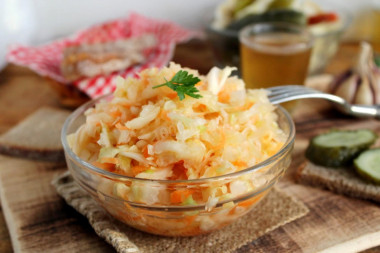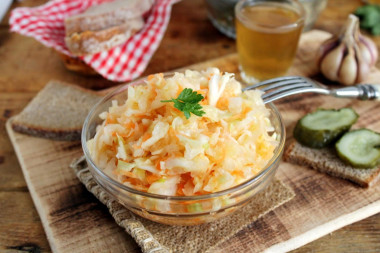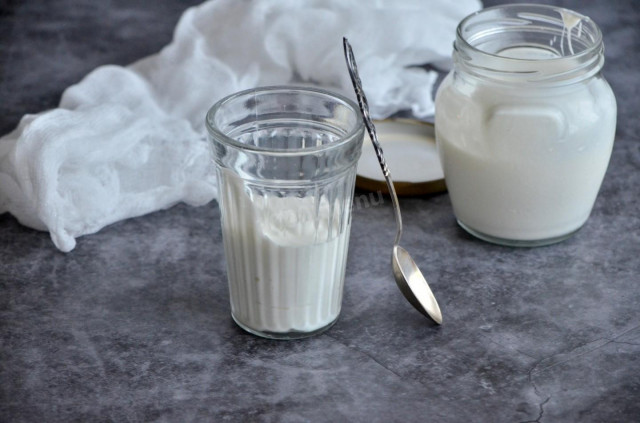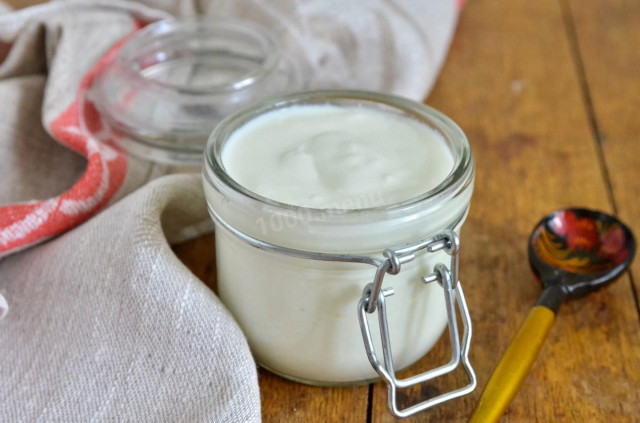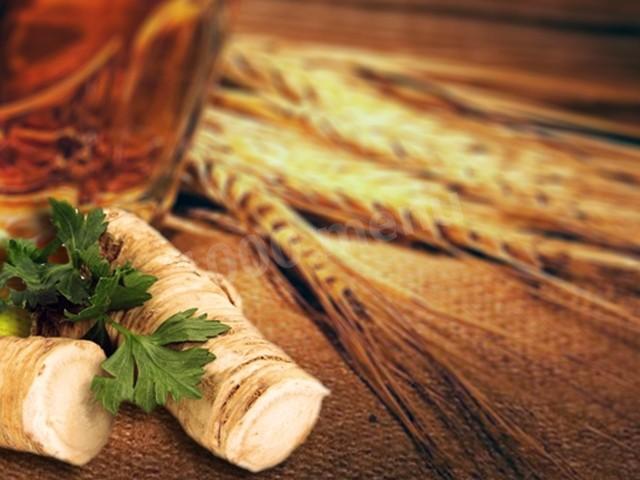Composition / ingredients
Step-by-step cooking
Step 1:
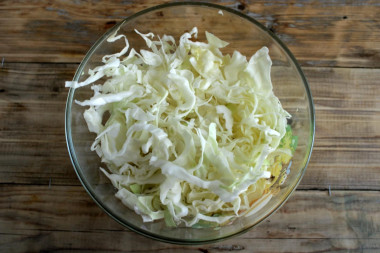
Prepare the ingredients according to the list. White cabbage for pickling should be used of late varieties, such cabbage should have dense, tight heads, without green inclusions on the leaves. Cabbage is cleaned from the top dirty, dry leaves. Cabbage is shredded with a shredder or thinly sliced with a knife.
Step 2:
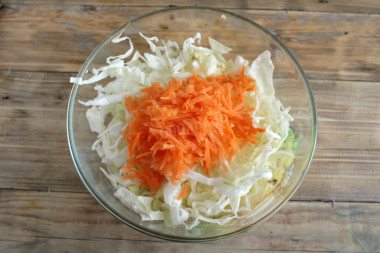
Carrots are washed, cleaned and grated. The color of the workpiece depends on the method of slicing carrots. Carrots can be cut with a knife, grated on a grater for Korean salads or on a regular grater. The smaller the vegetable is crushed, the brighter the juice and, accordingly, the finished sauerkraut will turn out.
Step 3:

Combine cabbage in a bowl with carrots. For the preparation of sauerkraut, it is necessary to use enameled or glass dishes. We add rock salt, if there is no such at hand, then you can use fine grinding, but it must be suitable for salting, not iodized. With clean hands, we grind the vegetable slicing with salt until the vegetables let the juice, and the salt does not dissolve.
Step 4:
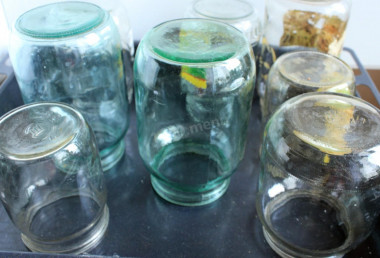
You need to prepare cans for cabbage in advance. I wash the cans with soda, wash the lids and boil them. We sterilize the jars in one of the most convenient ways: in a water bath, in a microwave or in an oven. The latter method allows you to cook a lot of dishes for blanks in a short time. We put wet cans with the neck down on the grill in the oven, set the temperature to 150 degrees, keep 0.5 l cans in the oven for about 10 minutes.
Step 5:

We put the cooked cabbage tightly in jars, pressing each layer of vegetable slicing with a spoon or a push. Immediately, juice should appear in the jar, which will cover the contents completely.
Step 6:

We fill the jars not to the very top, so that there is space for the juice that stands out from the vegetables. On top of the cans with cabbage, cover with gauze or cover with a lid so that dust does not get inside. To prevent the juice from leaking onto the table during fermentation, we put the jars in deep cups and leave them at room temperature for 3 days.
Step 7:

During this time, fermentation will begin in cans with cabbage, you need to pierce the cabbage with a fork with long teeth so that the puncture goes to the very bottom of the dishes and gases accumulating in the cabbage come out, otherwise the taste of the billet will turn out with bitterness. Then we close the jars with tight lids and put them away for storage in a cool place until winter. Bon appetit!
The shelf life of sauerkraut directly depends on the ambient temperature:
- in the cellar and in the refrigerator, subject to the tightness of the container and compliance with the temperature regime from 0 to +4 degrees, the product remains usable for up to 5-8 months;
- it is stored frozen for up to a year (you can put the finished sauerkraut in plastic bags, seal it tightly, leaving enough space for the brine to freeze, and put it in the freezer);
- at room temperature, the product will deteriorate in 3 days;
- at a temperature of + 10 degrees, cabbage will stand no longer than 10-15 days.
Caloric content of the products possible in the composition of the dish
- Carrots - 33 kcal/100g
- Dried carrots - 275 kcal/100g
- Boiled carrots - 25 kcal/100g
- Salt - 0 kcal/100g
- White cabbage - 28 kcal/100g
- Boiled white cabbage - 21 kcal/100g




